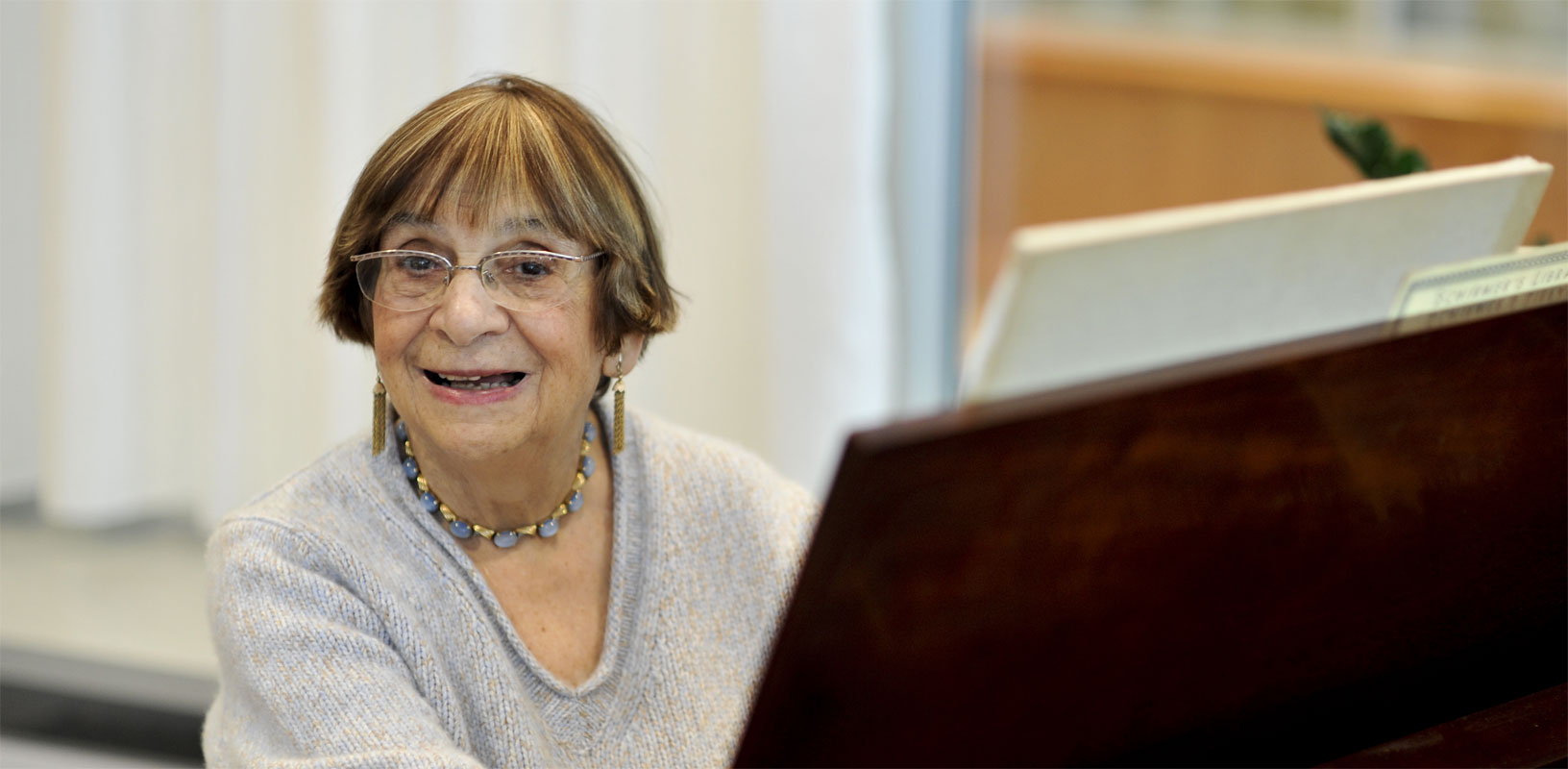Ursula Mamlok: composer's centenary celebrated in 2023

The centenary of Ursula Mamlok (1923-2016) falls on 1 February 2023, offering the opportunity to explore the music of this modernist composer who escaped from Nazi Germany to study and work in New York, returning to Berlin for her final years.
When Ursula Mamlok (née Lewy) fled Berlin at the age of 16 to escape Nazi persecution, her life and career were to experience the detours and obstacles so common to émigrées in the twentieth century. Yet she was to forge a distinctive musical voice in the USA and achieve some sense of reconciliation with history, particularly in her last decade thanks to her momentous decision to return to Berlin.
Mamlok's escape with her family in 1939 initially took her to Ecuador but the following year she won a place at the Mannes School of Music and travelled alone to New York, the city that was to become the geographical centre of her musical life for the next 66 years. She studied first with conductor George Szell and her later compositional mentors included Roger Sessions, Stefan Wolpe (who was likewise from Berlin and of Jewish descent) and Ralph Shapey. They helped mould her style which fully emerged in the early 1960s, characterised by agility of expression, complex rhythms, elegant proportions and imaginative colour, within a personalised serial idiom.
Major works by Mamlok include the set of six humoresques for orchestra Grasshoppers (1957), the Oboe Concerto (1976/2003), her San Francisco Symphony commission Constellations for orchestra (1991) [published by Edition Peters], and a wide range of chamber and vocal works. In addition to her work as a composer, Mamlok taught theory and composition at New York University, Temple University and Manhattan School of Music.
After the death of her husband Dwight G. Mamlok in 2005, the composer decided not to stay in New York but to move the following year to a retirement home in Berlin, the city she had left under such fraught circumstances in a different century. In the final decade before her death in 2016, and despite her advanced age, she enjoyed a final flowering and a newfound recognition in Germany, with ten chamber works composed for renowned musicians such as Holger Groschopp, Heinz Holliger, Kolja Lessing, Jakob Spahn, Cheryl Seltzer and Joel Sachs, and Spectrum Concerts Berlin. She was supported by radio journalist and musicologist Bettina Brand and by the commitment of her new publisher Boosey & Hawkes Bote & Bock. Her biography Time in Flux: the composer Ursula Mamlok, written by Habakuk Traber, was published in 2012 and an 80-minute documentary film charting her testimony, Movements by Anne Berrini, was screened in Berlin. The year after the composer's death, fulfilling her wishes, the Dwight and Ursula Mamlok Stiftung was established to promote music and literature, including the awarding of an annual prize.
> Listen to Mamlok's music
> Watch the trailer for the Movements documentary
> Visit the Mamlok Foundation website
Habakuk Traber describes how "In Mamlok's oeuvre there are nerve points where tendencies converge and from which lines emanate in different directions. Until her late years, she used a specific variant of the serial composition. This replaced for her, roughly speaking, the spatial-tonal thinking of the past, and served her as a means of turning the sound idea of a piece, which for her was always at the beginning of a composition, into a score. In the process, she came across certain serial forms that were particularly well suited to the elaboration of her ideas."
"She justified the relative conciseness and brevity of her compositions by stating that listening with full concentration for long periods of time was possible only for a few. With the complexity of her works, which is reflected above all in their rhythmic design and symmetry, she differentiated between the organization and the auditory image of the music. She attached great importance to temporal relations and time proportions, since they act as unconscious determinants of hearing. With her work, however, she aimed at direct communication."
> Read the full article by Habakuk Traber
Mamlok's centenary sees editorial work on her opus by Boosey & Hawkes Bote & Bock nearing completion, with new publications of her Alariana (1985) for recorder or flute, clarinet, bassoon, violin and cello, and of the song On Top of a Hill and the Longfellow setting Daybreak, both dating from the 1940s.
In terms of centenary performances, a concert on 3 December provides an upbeat to 2023 with her Concerto for string orchestra (1950) performed by the Berlin Academy of American Music at the Siemens-Villa. The centenary day itself on 1 February brings a celebration of Mamlok's life and music at the Manhattan School of Music in New York where she was a professor of composition for more than 40 years. The evening event includes a screening of Anne Berrini's documentary film and performances of Mamlok's music. Celebrations in Berlin include events at the Konzerthaus on 20 February and 23 March. A portrait concert takes place in the Ursula Mamlok Hall at the Musicschool City West in Berlin on 2 June and the month also sees performances of her orchestral work Constellations with the Orchestre de Berlin under Hartmut Rohde at the Laeiszhalle in Hamburg on 10 June and the Konzerthaus in Berlin on 15 June.
> Más información sobre la obra: Concerto
Photo: Simon Pauly
